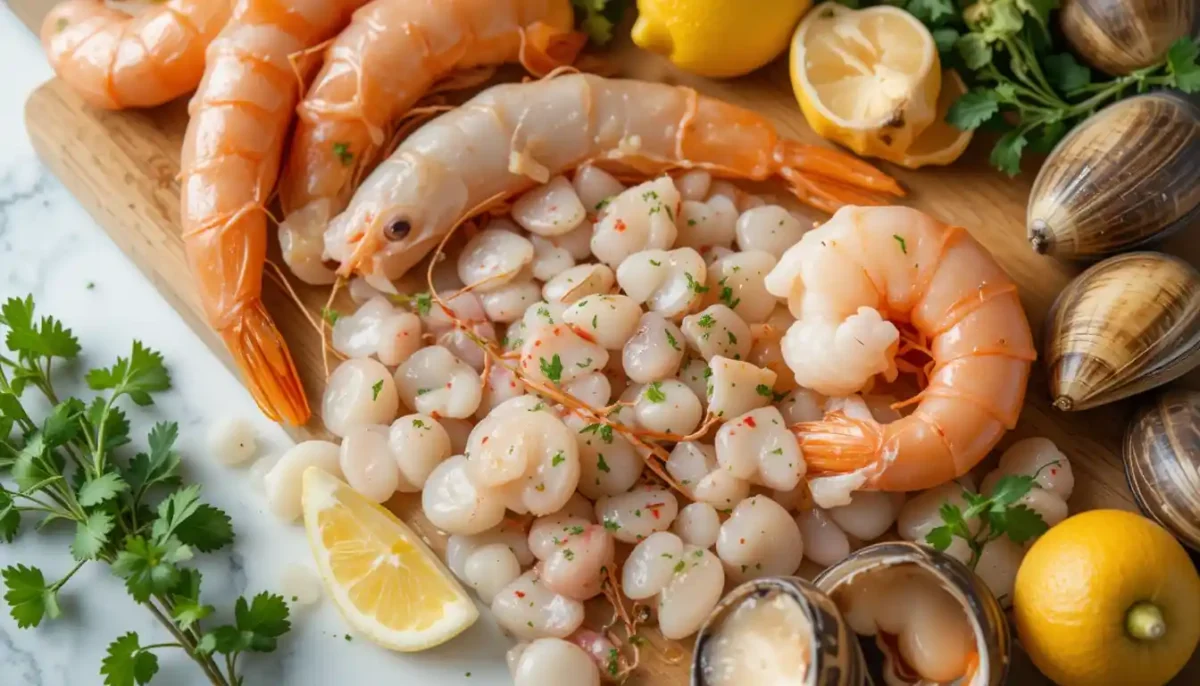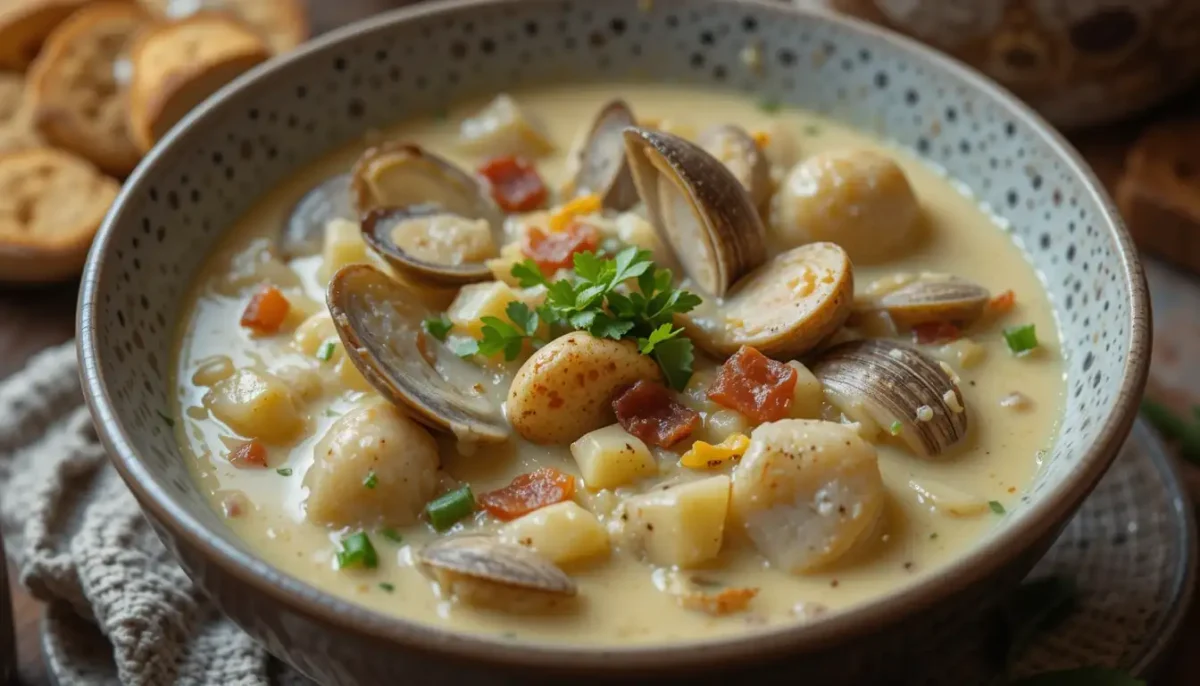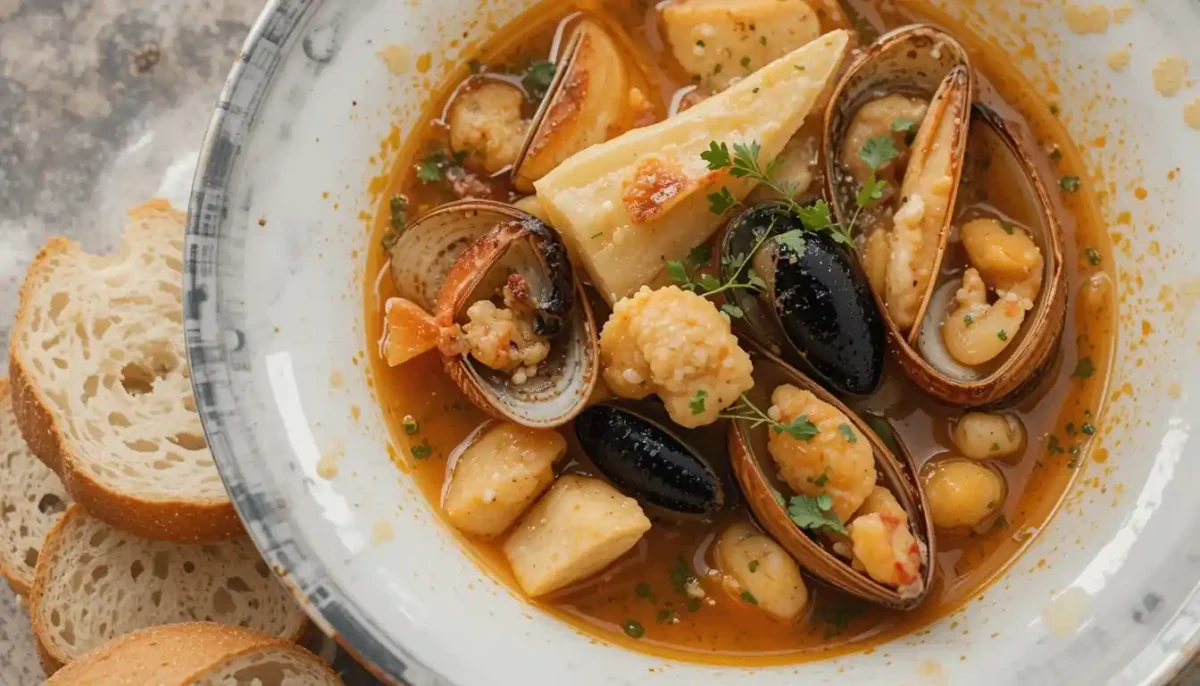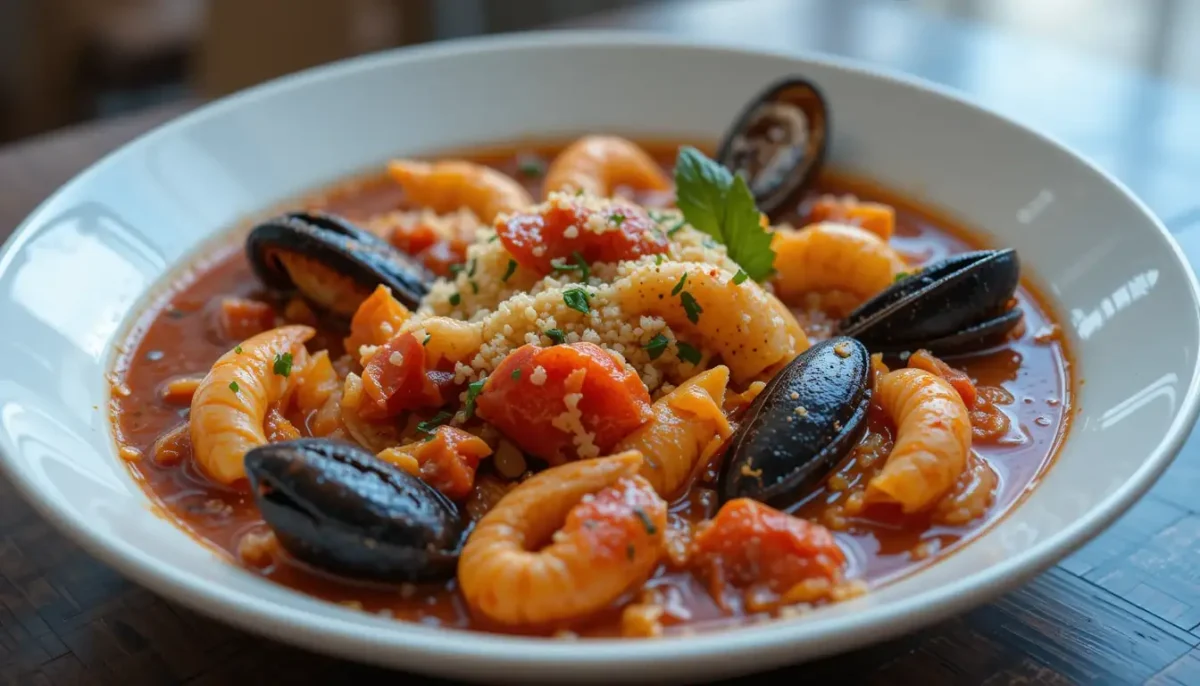The Ultimate Guide to Making Delicious Seafood Soup
Seafood soup is a culinary delight that combines the rich flavors of the ocean with aromatic herbs and spices. Whether you’re a seasoned chef or a home cook, creating a seafood soup that tantalizes the taste buds is a rewarding experience. In this comprehensive guide, we’ll explore everything you need to know about making the perfect seafood soup, from selecting the freshest ingredients to mastering the art of seasoning. Let’s dive into the world of seafood soup and discover how to create a dish that’s both comforting and gourmet.
Why Seafood Soup?
Seafood soup is not only delicious but also packed with nutrients. It’s a great source of protein, omega-3 fatty acids, and essential vitamins and minerals. This makes it a healthy choice for those looking to enjoy a nutritious meal. Additionally, seafood soup is incredibly versatile, allowing you to experiment with different ingredients and flavors to suit your taste.
Choosing the Right Seafood
The key to a great seafood soup is selecting the freshest seafood available. Here are some tips for choosing the best seafood for your soup:

- Fish: Opt for firm, white-fleshed fish like cod, haddock, or halibut. These types of fish hold up well in soup and absorb flavors beautifully.
- Shellfish: Shrimp, scallops, mussels, and clams are excellent choices for adding depth and texture to your soup. Ensure they are fresh and properly cleaned before use.
- Crustaceans: Lobster and crab can add a touch of luxury to your seafood soup. Use them sparingly to enhance the flavor without overpowering the dish.
Building the Perfect Broth
The broth is the heart of any seafood soup. A well-crafted broth can elevate your soup from ordinary to extraordinary. Here are some tips for creating a flavorful broth:
- Start with a Base: Use a good quality fish stock or vegetable broth as your base. You can also make your own fish stock by simmering fish bones with aromatics like onions, carrots, and celery.
- Add Aromatics: Enhance the flavor of your broth with garlic, ginger, and herbs like thyme and bay leaves. These ingredients add depth and complexity to the soup.
- Seasoning: Season your broth with salt, pepper, and a splash of white wine or lemon juice for acidity. This will balance the flavors and add brightness to the soup.
Cooking Techniques
Mastering the right cooking techniques is essential for making a perfect seafood soup. Here are some methods to consider:
- Sautéing: Begin by sautéing your aromatics in olive oil or butter. This helps to release their flavors and create a rich base for your soup.
- Simmering: Once your broth is prepared, add your seafood and let it simmer gently. Avoid boiling, as this can make the seafood tough and rubbery.
- Layering Flavors: Add your seafood in stages, starting with the fish and ending with the shellfish. This ensures that each ingredient is cooked to perfection.
Classic Seafood Soup Recipes
Here are a few classic seafood soup recipes to inspire your culinary journey:
1. New England Clam Chowder
A creamy and comforting soup made with clams, potatoes, and bacon. This classic dish is perfect for a cozy night in.

2. Bouillabaisse
A traditional French seafood stew that combines a variety of fish and shellfish with a saffron-infused broth. Serve with crusty bread for a complete meal.

3. Cioppino
An Italian-American seafood stew that features a tomato-based broth and a medley of seafood. It’s a hearty and satisfying dish that’s perfect for sharing.

Creative Variations
Don’t be afraid to get creative with your seafood soup. Here are some ideas to inspire you:
- Thai Coconut Seafood Soup: Add coconut milk, lemongrass, and Thai curry paste for a fragrant and exotic twist.
- Mediterranean Seafood Soup: Incorporate olives, tomatoes, and feta cheese for a Mediterranean-inspired flavor profile.
- Spicy Seafood Gumbo: Add okra, andouille sausage, and Cajun spices for a spicy and flavorful gumbo.
Tips for Success
- Use Fresh Ingredients: Fresh seafood and herbs make a significant difference in the flavor of your soup.
- Don’t Overcook: Seafood cooks quickly, so be mindful of cooking times to avoid overcooking.
- Taste and Adjust: Continuously taste your soup and adjust the seasoning as needed.
Frequently Asked Questions (FAQs)
1. What types of seafood can I use in the soup?
You can use a variety of seafood, such as shrimp, scallops, mussels, clams, crab, cod, halibut, or any firm white fish. Frozen seafood works well too, as it’s often flash-frozen at peak freshness.
2. Can I use frozen seafood instead of fresh?
Yes, frozen seafood is a great option. It’s often flash-frozen to preserve freshness and can be added directly to the soup without thawing, saving time.
3. What if I don’t have fish stock?
You can substitute fish stock with chicken or vegetable stock. Chicken stock adds a milder flavor, while vegetable stock keeps the soup light. Homemade seafood stock made from shrimp shells or fish bones is another excellent option.
4. How can I thicken the soup?
To thicken the soup, you can use a roux (a mixture of flour and butter), coconut cream, heavy cream, or a cornstarch slurry (1 tablespoon cornstarch mixed with 2 tablespoons cold water). Stir it in at the end of cooking.
5. Can I make the soup ahead of time?
Yes, seafood soup can be made ahead and stored in the refrigerator for 3-4 days. It also freezes well for up to 3 months. Reheat gently on the stovetop or in the microwave.
6. How do I prevent overcooking the seafood?
Add the seafood towards the end of cooking, as it cooks quickly. Simmer just until the fish flakes easily and shrimp turn pink, usually 5-7 minutes.
7. Can I add wine to the soup?
Yes, white wine enhances the flavor of the soup. Add it when building the broth, and let it simmer to cook off the alcohol. Dry white wine works best.
8. What herbs and spices work well in seafood soup?
Common herbs and spices include thyme, bay leaves, parsley, oregano, smoked paprika, and red pepper flakes. For an Asian twist, try lemongrass, ginger, or cilantro.
9. Can I make the soup spicier?
Absolutely! Add red pepper flakes, cayenne pepper, or fresh chili peppers to the broth. For a Thai-inspired flavor, use coconut milk and red curry paste.
10. What are the best accompaniments for seafood soup?
Serve the soup with crusty bread, garlic bread, or rice to soak up the flavorful broth. A side salad or steamed vegetables also pairs well.
11. Can I use canned tomatoes?
Yes, canned diced tomatoes are a convenient option. For a richer tomato flavor, you can also add tomato paste or fresh tomatoes811.
12. How do I adjust the saltiness?
Taste the soup before adding salt, as seafood and stock can already be salty. Use low-sodium stock if preferred, and adjust seasoning at the end.
13. Can I make the soup dairy-free?
Yes, use coconut cream or a dairy-free alternative instead of heavy cream. The soup will still be creamy and flavorful.
14. What’s the best way to clean shellfish?
Scrub mussels and clams under cold water to remove dirt and debris. Discard any with broken shells or that don’t close when tapped.
15. Can I add vegetables to the soup?
Yes, vegetables like carrots, celery, onions, potatoes, and tomatoes are commonly used. Add them early to build flavor in the broth
Conclusion
Seafood soup is a versatile and delicious dish that can be enjoyed year-round. By following these tips and techniques, you can create a seafood soup that’s both flavorful and satisfying. Whether you stick to a classic recipe or experiment with new flavors, the possibilities are endless. So, gather your ingredients, roll up your sleeves, and start cooking your perfect seafood soup today!







